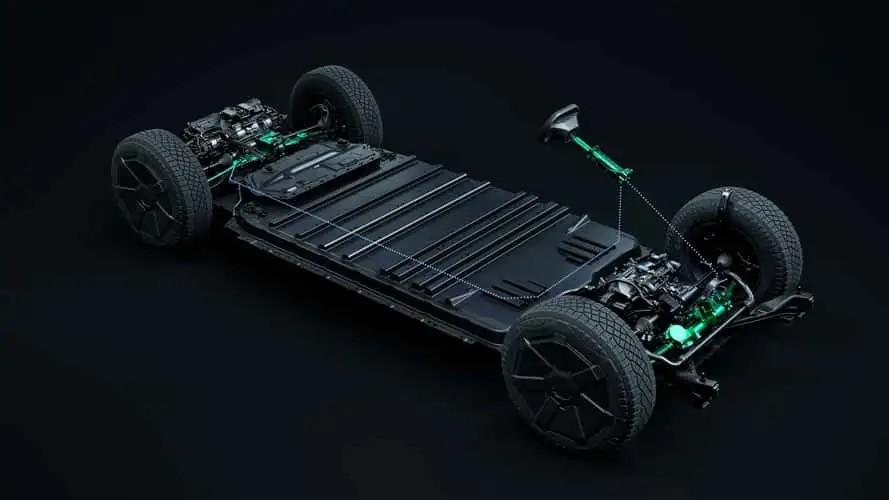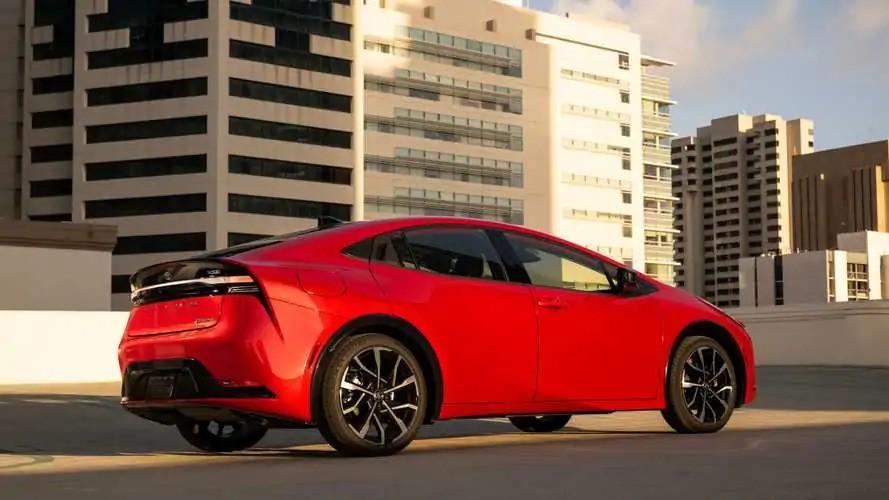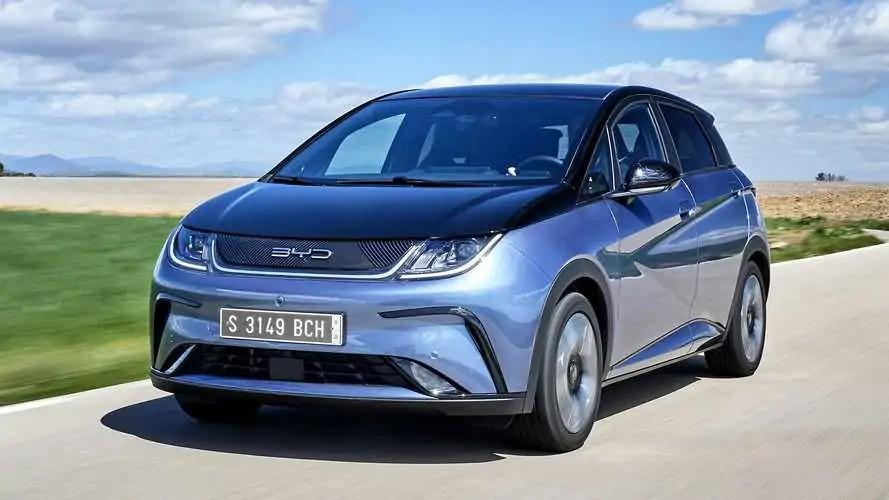Tesla's latest production hell: batteries for cybertruck
Tesla is no stranger to "production hell." That term, which comes from CEO Elon Musk himself, is commonly associated with the early days of the Model 3. But the automaker has been through the fire many times, including with the launch of the Model S, and even Musk has warned of similar challenges ahead with the stainless-steel Cybertruck. And there's one area that may prove particularly tricky: its batteries.
Welcome back to an almost Christmas edition of Critical Materials, our morning roundup of industry news that affects the EV space. Also on tap for today: some good news, for a change, on America's fuel economy average, and the Biden Administration may hit back harder at China's EV expansion than we thought. Let's take a look, according to Insideevs.
30%: Cybertruck Battery Hell?

When he set out to temper expectations about the Cybertruck on an October investor call, Musk said he didn't expect to hit regular, reliable production to the tune of 250,000 trucks per year until "sometime in 2025." That's a ways off from now, and even more so from when the truck itself was unveiled way back in 2019. (Does that feel like 25 years ago and not just four to anyone else?
This isn't terribly surprising. For all its many innovations, Tesla is still not amazing at launching new products and we know stainless steel is miserably difficult to work with. But Reuters reports there's one other unexpected bottleneck, and it's the updated 4680 batteries for the Cybertruck.
It's been making those for a while, but speed is a concern, per nine sources who spoke to the news wire:
Tesla's Giga Texas factory is currently churning out 4680 battery cells at rate only sufficient to power about 24,000 Cybertrucks a year, or about a 10th of the required output, according to Reuters calculations based on a combination of public data and unpublished figures provided by sources.
Being able to ramp up battery output massively by dry-coating electrodes - rather than using the slower, more costly wet-coating - was a key factor behind Tesla's forecasts in 2020 that it would more than halve battery costs, cut investment significantly, and create smaller, greener factories.
The nine people, who spoke to Reuters on condition of anonymity because of the sensitivity of the matter, said Tesla had yet to crack dry-coating at the industrial scale needed to make 4680 batteries fast enough to hit its production targets.
The people said dry-coating the anode in the 4680 cells was not problematic but Tesla was struggling with the same technique for the cathode - the most expensive component in a battery.
Dry-coating anodes and cathodes is proven in the laboratory, as well as for smaller energy storage devices such as super capacitors, and even some small batteries, according to Yuan Gao, a battery technology consultant.
"But no one has done it so far for large EV batteries at a mass scale and at a high enough speed. Tesla is the first one to try to commercialize this," said Gao, who has worked in the industry for three decades.
That story goes on to note that sources claim the 4680 batteries in the Cybertruck have an estimated 1,360 individual cells, which "means Tesla would need to make 340 million cells a year, or almost a million a day" to produce 250,000 trucks annually. Right now, Tesla can reportedly make 10 million 4680 cells in 16 weeks. I'm no math genius, but that means Tesla has a ways to go to hit volume.
There are all kinds of reasons why this is a challenge, but this stood out:
The sources said Tesla was struggling to mix the cathode materials, which include lithium, manganese and nickel, with a binder and stick them to a metallic foil to produce a cathode - without using moisture.
Two of the people said the process worked for small amounts but when Tesla tried to scale it up, a lot of heat was generated and this melted the binder, which one of the sources believed was polytetrafluoroethylene, more commonly known as Teflon.
"If you melt the glue, pretty soon everything will become one big chunk of gooey mess," another of the sources said.
Here's the thing: let's give credit where it's due here. Tesla may be ending 2023 with a few headaches, like that Autopilot recall or whatever fallout comes from that other Reuters investigation into Model 3 suspension defects yesterday. But I think it will figure out the battery production challenge here. This is what that company is really good at—beating the roadblocks faster and better than nearly all other automakers can. Of all the challenges the Cybertruck may face, this is the one that seems most surmountable and will probably lead to more innovation down the line.
I'd be more concerned about the stainless steel body stuff than this, frankly. But we'll see if I'm right.
60%: America Set A Fuel Economy Record In 2022

I told you I had good news for you today. The EPA finally got around to looking at all of its fuel consumption data from 2022 (it's the government, things take time) and it shows that last year, the U.S. set an all-time record for fuel economy. In fact, 2022 brought us the best yearly improvement in fuel economy in nine years. Not bad.
This is from Reuters (via Automotive News) again:
Vehicles were up 0.6 mpg over 2021 after being unchanged versus 2020, the EPA said, noting electric vehicles and plug-in hybrid EVs improved the average fuel economy by 1.2 mpg in 2022. Fuel economy is forecast to increase to 26.9 mpg in 2023, the EPA said.
EPA Administrator Michael Regan said the report "highlights the historic progress made so far by the industry to reduce climate pollution and other harmful emissions."
It's positive because 2023 is poised to be even better, in theory. This year ended up being a record one for sales of not just EVs, but hybrids (both the plug-in and regular kinds) as well. The two together made up nearly 20% of new car sales in the U.S. That should result in a lot less petroleum used by new vehicles, and it should yield an increase in fuel economy averages for next year too. (EVs may not run on gas, but they're factored into automakers' fleet averages and push their numbers up as a result.)
Also good news: the story notes that the average range of EVs in 2022 was 305 miles, more than four times higher than in 2011. Again, imagine how much better that will be next year too.
Now, for some bad news. The Big Three American automakers still kind of lag on this front and we're still quite addicted to big vehicles, which is never great for efficiency:
Stellantis had the lowest fuel economy of major automakers, followed by GM and Ford. Horsepower, vehicle weight and size all hit new records in 2022 — and are projected to hit again hit record levels in 2023.
The report showed Americans kept moving away from cars and are buying more SUVs. Sedans and wagons fell to just 27 percent of vehicles sold in 2022, while SUVs rose to 54 percent.
Disappointing, but let's take the win here. Fuel consumption is declining across the board, which is good because the climate news out of COP28 was not great, folks. I'm eager to see how next year shakes out with so many more EVs and hybrids in the mix.
90%: Biden Could Raise Tariffs On More Chinese-Made Goods, Including EVs

Would fuel consumption and emissions decrease further here if that sleek BYD Dolphin was allowed to swim to American shores? Maybe. But U.S. policy goals right now seek to heavily limit China's influence on our EV battery supply chains and to protect our market from a flood of tough, cheap new competitors from a country whose government is, well, less than great. No big secret there.
So a day after learning China is trying to not spark a trade war in Europe, we learn the Biden Administration could get even tougher with tariffs on Chinese-made goods, including cars. This is from the Wall Street Journal:
Biden administration officials, long divided over trade policy, have left in place Trump-era tariffs on roughly $300 billion of Chinese goods. But officials at the White House and other agencies are debating the levies again, the people said, with an eye on wrapping up a long-running review of the tariffs early next year.
Raising some tariffs could allow President Biden to signal he is tough on China as he approaches a 2024 re-election campaign that could again have him face Donald Trump.
The Biden administration is also considering lowering tariffs on some Chinese consumer products that officials don’t see as strategically important, in addition to the potential increases on clean-energy products, the people familiar with the conversations said.
The administration hasn’t decided on the tariffs, the people said. Previous internal discussions about adjusting tariffs on China fizzled out without any changes. Spokesmen for the Office of the U.S. Trade Representative and the National Security Council declined to comment.
There are a few notable things at work here. First off, besides, I guess, Polestar (which makes the Polestar 2 in China but is a weirdly international brand) there are no Chinese brands selling cars in the U.S. right now. A few automakers like Buick and Volvo sell some China-made EVs here that are subject to the tariffs, but on the whole, raising those would not impact too many current cars. But it would probably further limit Chinese attempts to enter our market. Remember also that battery materials from China are why the EV tax credits will be more restrictive next year, if you want a sense of where policy minds are at.
As that story notes, Biden wants to appear tough on China; with his EV push, Republican rivals have accused him of being soft in that department. But the pressure is coming from his own party as well:
Sens. Sherrod Brown (D., Ohio) and Bob Casey (D., Pa.), each running for re-election next year in competitive states, warned Biden in a letter last month against lowering any tariffs on China.
“These tariffs are essential to level the playing field for American workers to compete and counter unfair trade practices by China,” they wrote.
Lastly, let's not forget there's an element of industry protectionism at work here too. Buried in the middle of the story is this gem:
The conversations have picked up recently as officials grow concerned about Chinese clean-energy exports, which are flooding global markets at low prices as China’s domestic economy slumps. U.S. officials worry that American companies, even with the protection of existing tariffs and new subsidies, won’t be able to compete with China’s production.
As I often say around here: the U.S. automakers can figure out EVs, or BYD will figure it out for them.
100%: What's Better For America—Cheap EVs Or Fending Off China?
Admit it, a bunch of affordable EVs on the market would be good for emissions and the Biden Administration's own fuel economy goals. But is it worth the tradeoff for letting China, with all its known issues, into our market?








